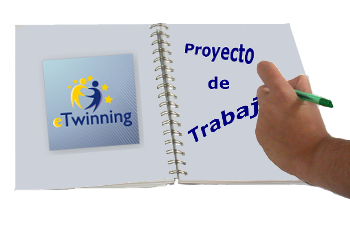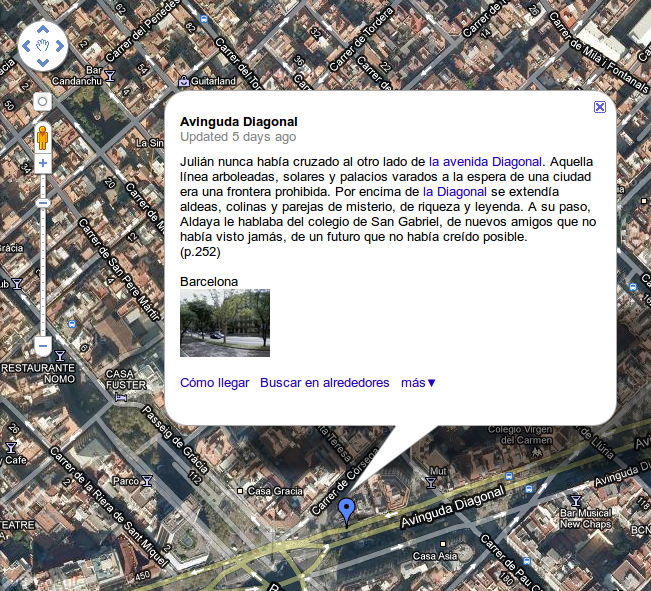Best bits
The making-of of an eTwinning project

In the cinema, a making-of is a documentary video which shows how a film or television programme was produced. The shortest making-of’s are often used to explain the production process and to acknowledge the work of the people who have participated in the filming. But what has this got to do with eTwinning projects? We are finding more and more projects which are characterized by the variety of activities carried out by the pupils – slide presentations, wikis, blogs, chats, video conferences -. However, it is not always possible to see how they have been carried out or how they have been organized. For anyone who is not participating in a project it is interesting to be able to be present during the process, just like any other team member, and see the participating agents, the means used, etc. We are referring to the making of an eTwinning project.
Project ideas from the eTwinning 2.0 course
 From the National Support Service we want to congratulate all the teachers who have participated in the eTwinning 2.0 course during the second edition of the on-line ITE courses from 2010-2011. Although the permanent training of teachers has been recognized as necessary, this task is often made difficult because of lack of time. On this occasion many individuals have completed the course satisfactorily, and we hope that for the next edition, which will be in October, many more will participate. We will keep you informed from our web site.
From the National Support Service we want to congratulate all the teachers who have participated in the eTwinning 2.0 course during the second edition of the on-line ITE courses from 2010-2011. Although the permanent training of teachers has been recognized as necessary, this task is often made difficult because of lack of time. On this occasion many individuals have completed the course satisfactorily, and we hope that for the next edition, which will be in October, many more will participate. We will keep you informed from our web site.
Learn by playing
 Play, as an activity which is inherent in the human being, favours psychomotor, intellectual, affective and social development, preparing us for adult life. It is therefore not only a form of amusement but also a way of learning. Although there is more and more evidence of the effectiveness of games in education, many teachers cannot find a way to integrate them as a methodology in the classroom. We show below some examples of play, as a didactic method at different levels of education, as well as with different degrees of involvement.
Play, as an activity which is inherent in the human being, favours psychomotor, intellectual, affective and social development, preparing us for adult life. It is therefore not only a form of amusement but also a way of learning. Although there is more and more evidence of the effectiveness of games in education, many teachers cannot find a way to integrate them as a methodology in the classroom. We show below some examples of play, as a didactic method at different levels of education, as well as with different degrees of involvement.
Collaborative activities for Spanish Language and Social Studies

As wehave been telling you, have been telling you, several workshops were given in the multilateral eTwinning 2011 meeting: Let’s collaborate in Spanish, organized in Madrid by the National Support Service. Today we are publishing the collaborative activities proposed for “Spanish Language and Social Sciences, hands on”.
Actividades colaborativas para Matemáticas y Ciencias

En el marco del multilateral eTwinning 2011: Colaboramos en español, organizado en Madrid por el SNA eTwinning, se celebró el pasado veinte de mayo el taller “Matemáticas y Ciencias, con las manos en la masa”, en el que se realizó un recorrido por distintas herramientas útiles para la realización de actividades colaborativas en los proyectos de estas áreas, ejemplificando su uso en distintos proyectos, algunos de ellos premiados a nivel nacional y europeo en la convocatoria de este año.
Para empezar, ¿cómo enriquecer actividades presentes en todo proyecto, tales como la presentación de los alumnos y de su entorno? La herramienta VoiceThread puede ser una buena elección para favorecer la interacción, al permitir a los alumnos insertar comentarios de texto, audio o video a la presentación hecha por sus socios.
Ya entrados en materia, herramientas como Google Maps y Dipity son muy útiles para crear, respectivamente, un mapa colaborativo que muestre cualquier aspecto relacionado con las ciencias: parques nacionales, flora y fauna, etc. o una línea del tiempo en la que incluir, por ejemplo, hitos en la historia de la ciencia o de las matemáticas. Tanto los mapas como las líneas del tiempo pueden hacerse tan completos como se quiera, incrustando textos, fotos, archivos de audio, etc.
Google Docs es una herramienta de coedición que se usa de forma síncrona o asíncrona, incorporando un chat para coordinar la escritura. Con ella, alumnos y profesores crean un documento de forma conjunta; ¿por qué no usarlo, por ejemplo, para escribir un relato de ciencia entre todos los socios?
Otra iniciativa brillante es la creación de una gymkhana virtual en la que los alumnos deben colaborar para resolver una serie de cuestiones o acertijos de naturaleza científico-matemática, actividad que en el proyecto Maths in Wonderland resuelven mediante un audioblog creado con la herramienta Loudblog, y en Mediterranean products, con un libro digital creado con myebook conteniendo videos con las preguntas a resolver.
Visita la presentación para enlazar con las distintas actividades y recoger ideas y recuerda, ¡todas las herramientas mencionadas son gratuitas!
More Articles...
- Who's on the other side?
- Comics for the classroom
- Mathematics applied to real life
- Design and plan a project collaboratively
- How to use TwinSpace when you are not working with it?
- Learn and have fun
- What do you know about Europe?
- Don't write it... tell me about it!
- European body language
- Show your work!
Page 1 of 4
Best bits
- The making-of of an eTwinning project
- Project ideas from the eTwinning 2.0 course
- Learn by playing
- Collaborative activities for Spanish Language and Social Studies
- Actividades colaborativas para Matemáticas y Ciencias
- Who's on the other side?
- Comics for the classroom
- Mathematics applied to real life
- Design and plan a project collaboratively
- How to use TwinSpace when you are not working with it?
- Learn and have fun
- What do you know about Europe?
- Don't write it... tell me about it!
- European body language
- Show your work!
- Fly above the European cultural heritage
- Curious talks about wild animals
- You've got work, Hercules
- European citizen space










